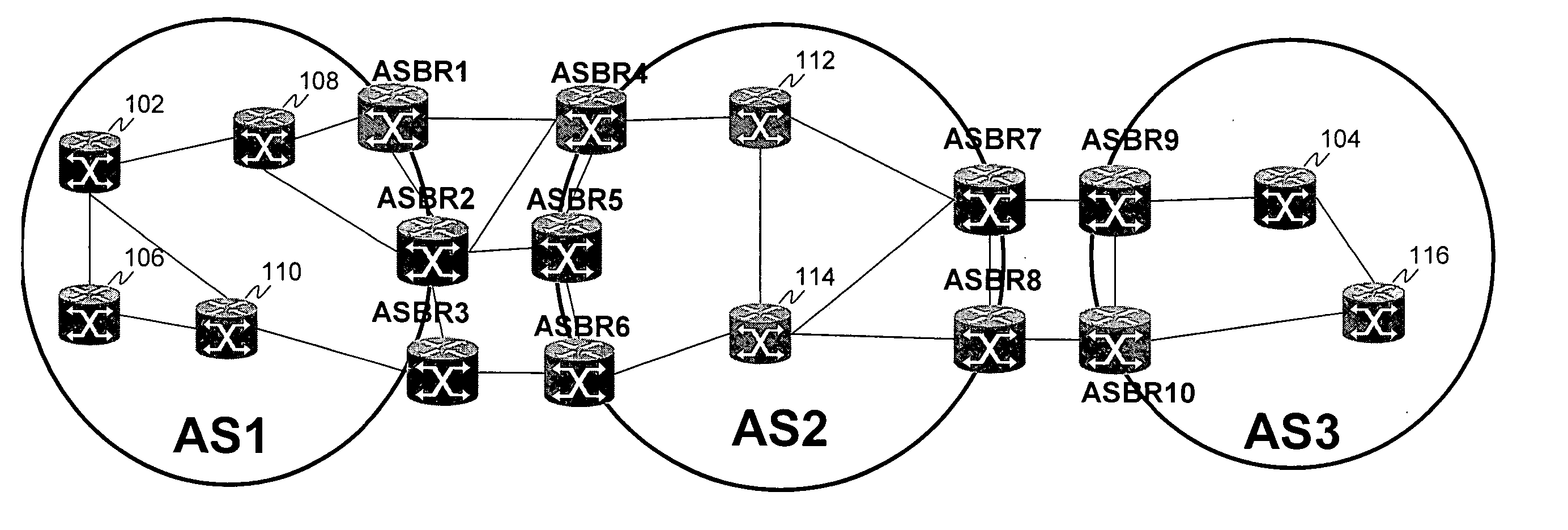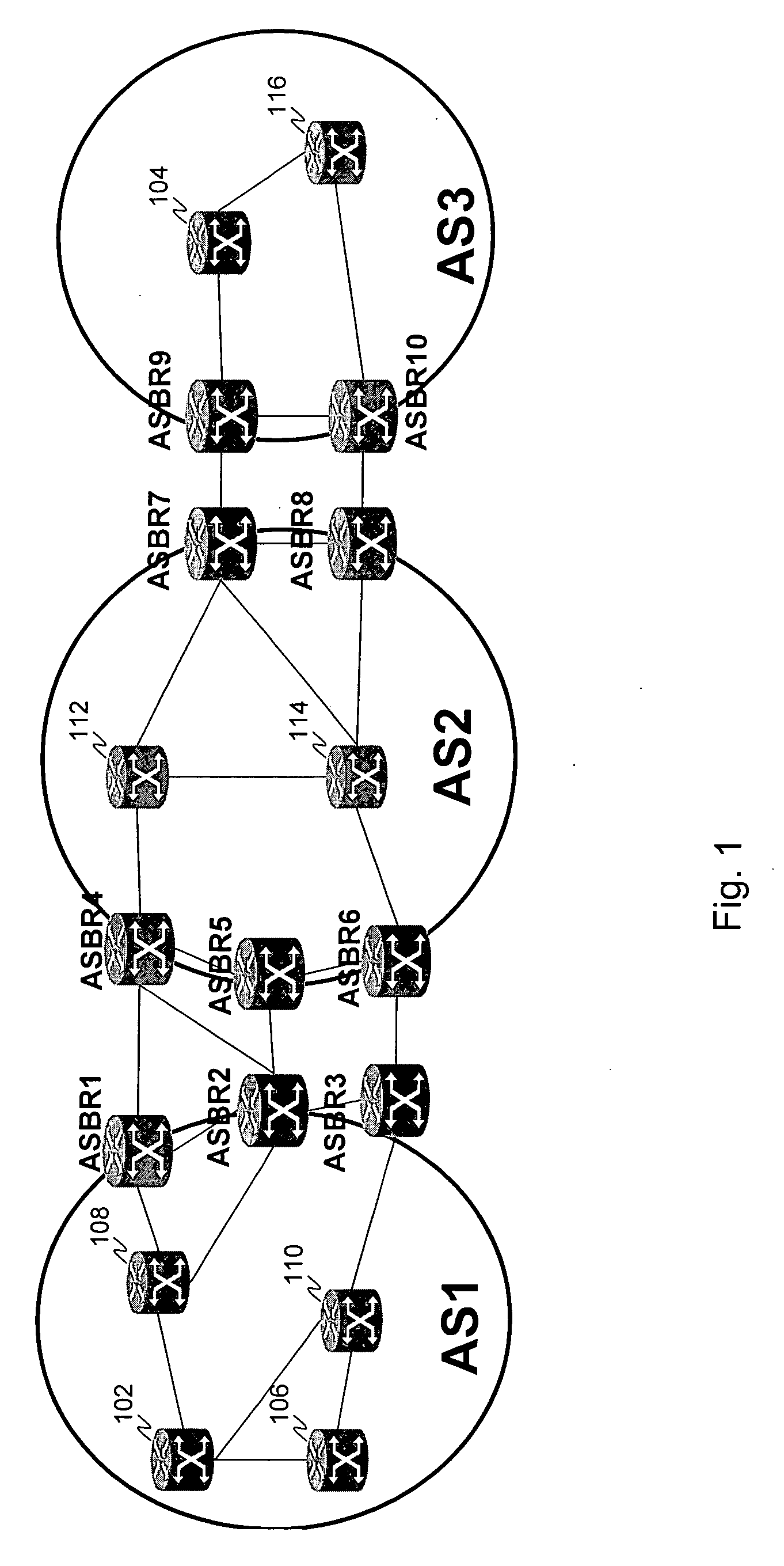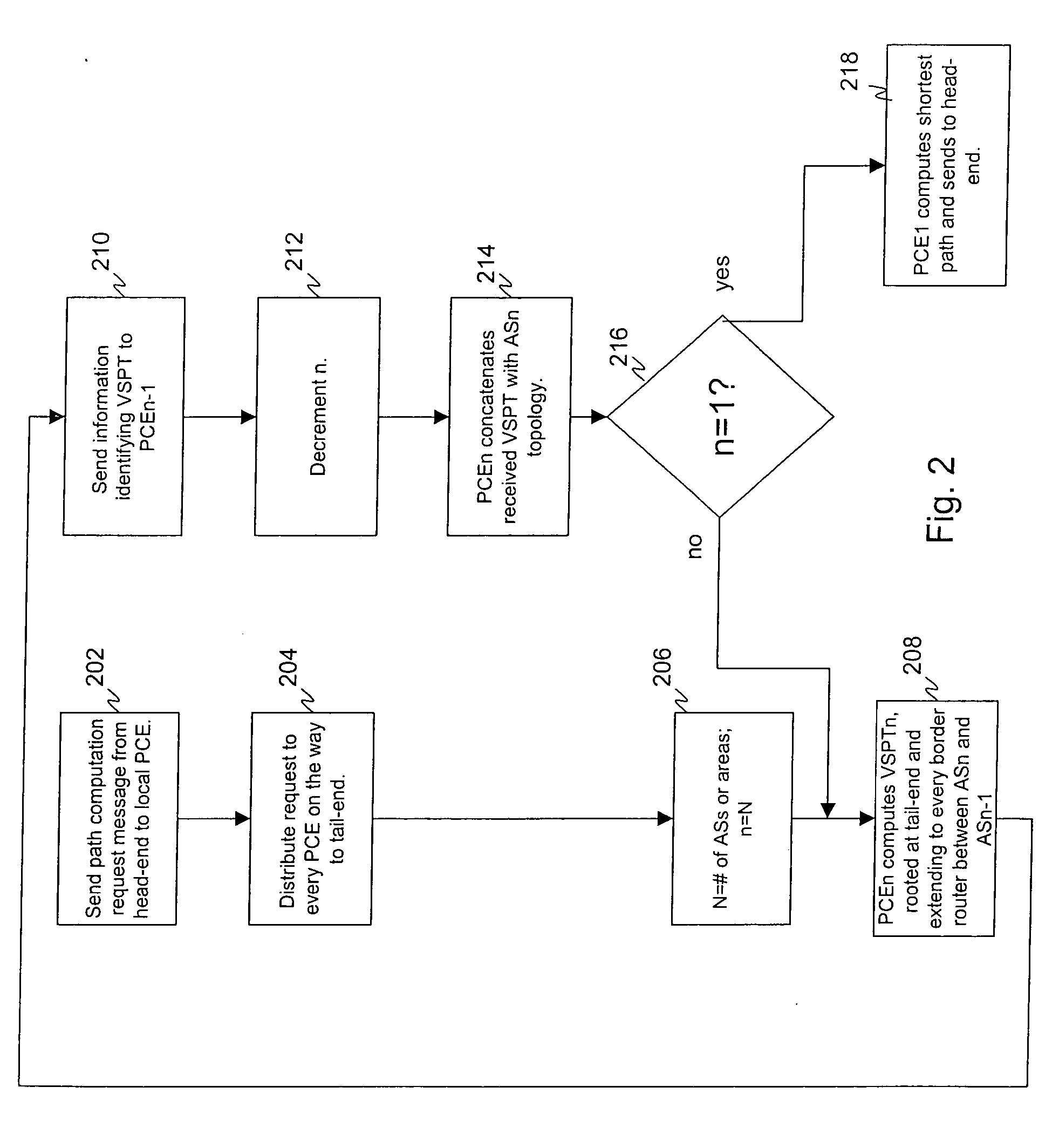Computing inter-autonomous system MPLS traffic engineering LSP paths
a technology of traffic engineering and autonomous systems, applied in the field of path computation, can solve the problems of standard mpls traffic engineering path computation techniques that cannot compute inter-area paths, and the path computation at the head-end of the lsp
- Summary
- Abstract
- Description
- Claims
- Application Information
AI Technical Summary
Benefits of technology
Problems solved by technology
Method used
Image
Examples
Embodiment Construction
[0016] The present invention will be described with reference to a representative network environment and employs a certain combination of network protocols to forward data through the network. The links may be implemented using any type of physical medium such as, e.g., an optical medium, wireless medium, twisted pair, etc. Links may also be logical connections that give the connected nodes the property of adjacency in view of the operative networking protocols.
[0017] In one embodiment, the nodes of such a network interoperate in a manner specified by various protocols including e.g., TCP / IP and protocols defined but not limited to by the following documents:
[0018] E. Rosen, et al., “Multiprotocol Label Switching Architecture,” RFC 3031, Internet Engineering Task Force, January 2001.
[0019] Braden, et al. “Resource ReSerVation Protocol (RSVP)-Version 1 Functional Specification,” RFC 2205, Internet Engineering Task Force, September 1997.
[0020] Awduche, et al., “Requirements for T...
PUM
 Login to View More
Login to View More Abstract
Description
Claims
Application Information
 Login to View More
Login to View More - R&D
- Intellectual Property
- Life Sciences
- Materials
- Tech Scout
- Unparalleled Data Quality
- Higher Quality Content
- 60% Fewer Hallucinations
Browse by: Latest US Patents, China's latest patents, Technical Efficacy Thesaurus, Application Domain, Technology Topic, Popular Technical Reports.
© 2025 PatSnap. All rights reserved.Legal|Privacy policy|Modern Slavery Act Transparency Statement|Sitemap|About US| Contact US: help@patsnap.com



